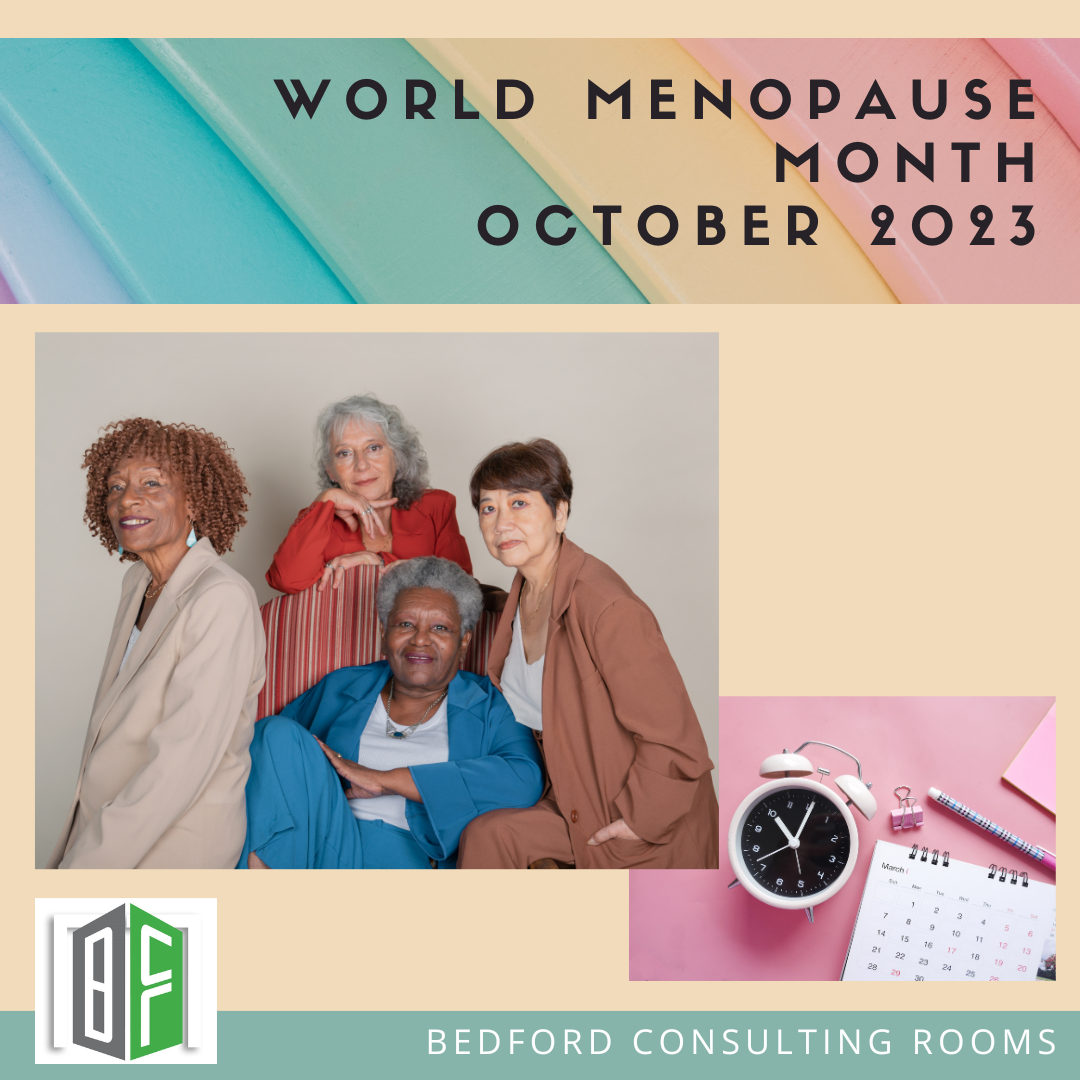Nutrition and Menopause
by Terri Nagib, Middle Way Wellness
October 2023:
World Menopause Month
October is World Menopause Month! Here at Middle Way Wellness, we recognise that just as no two people are the same; no two women’s experience of menopause is exactly the same. Whether we experience our first menopause symptoms in our mid 30’s or mid 50’s, there are many factors which affect our natural hormonal life cycle. Lifestyle, our current state of health, genetics and both our past and current nutrition status, all play a part in both the range and intensity of symptoms we might experience.
The Perimenopause is the stage prior to menstruation ceasing which can last up to 10 years during which women may notice changes to their menstrual cycle patterns, flow, body composition, sleep quality and mood. Generally, perimenopause starts between 40-44 years old, and we can say we’ve officially reached Menopause, once 12 consecutive months have passed without us having had a period.
What’s actually happening during perimenopause?
During perimenopause, less estrogen is produced. But before perimenopause, estrogen levels can actually rise for a time, and progesterone levels typically decrease. Lower progesterone—with or without higher estrogen—may lead to heavier periods, which is more common in early perimenopause. It’s these hormone fluctuations before and during perimenopause, where women may need support as symptoms can range from mild to severe.
How do I know if I’m experiencing hormone imbalance during perimenopause?
Your GP can confirm with a simple blood test but you can also look out for:
• Changes in mood like irritability, depression or mood swings.
• Changes in energy levels.
• Sleep problems – insomnia and light sleep.
• Weight gain and change in distribution of weight.
• Thinning hair and changes to dry/oily skin.
• Aches, joint stiffness and muscle pain.
• Irregular periods or skipping periods.
• Periods that are heavier or lighter than usual.
• Hot flashes (a sudden feeling of warmth that spreads across your body).
• Vaginal dryness and discomfort during sex.
• Urinary urgency (needing to urinate more frequently).
Some of these symptoms can pass under the radar as just generalised issues but YES… changes to mood, energy levels and sleep can often be the first signs of fluctuating hormones and the start of perimenopause.
I’m experiencing symptoms! What help is available to me?
Your GP can offer support – bioidentical hormone therapy (HRT), is considered a safe and effective way to reduce some of the physical symptoms, as well as gels and creams and other medications. It is important to know that this isn’t suitable for all women particularly if you have a history of cancer, or you just might not want to use hormone therapy. Whatever approach you decide is right for you, it’s widely recognised and accepted that natural therapies can play a huge part in supporting and alleviating symptoms, with or without the use of HRT. What and how we eat as well as how we handle stress, is paramount to how we experience perimenopause and menopause.
What can I do to manage my symptoms at home, naturally?
Here are some simple and effective ways to increase your nutrient status, lower inflammation, support your hormone production & clearance and in turn, reduce symptoms:
- • Increase antioxidants and fibre from fruits and colourful vegetables – variety is key! Vegetable rich homemade soups and stews with beans and legumes are a great combo.
- • Include a phytoestrogen source daily – these are naturally-occurring plant compounds which are structurally similar to the oestrogen hormone. These include: soya beans (from the freezer aisle), flaxseed/linseed ground and sprinkled on porridge, lentils, chickpeas, parsley, celery, thyme, cabbage, spinach, wholegrains.
- • Choose more plant than animal proteins and eat organic where possible to reduce exposure to hormone disruptors.
- • Drink at least 1.5 litres of water a day and herbal teas. Limit coffee or reduce to 1 in the morning (if you can’t do without!)
- • Maintain a low glycaemic index diet, which substitutes white refined carbohydrates like sliced white bread and pasta, for wholegrain brown rice, buckwheat, rye, wholegrain pasta.
- • Include a source of omega-3 in your meals & snacks e.g. oily fish such as salmon, mackerel, tuna, herring, and sardines. Nuts and seeds such as flaxseed, chia seeds, hemp seeds and walnuts and avocados.
• Include prebiotic and probiotic foods daily, such as live natural yoghurt, garlic, leeks, mushrooms, onions, sauerkraut, kefir, kombucha.
• Avoid foods / beverages which can aggravate hot flushes, e.g., coffee, very spicy foods and alcohol.
• Exercise can increase hormone production! For low impact cardio workouts, try swimming or cycling & weight training and resistance bands for improving muscle tone. Studies show that regular exercise of moderate intensity will increase thyroid and testosterone hormone secretion, and improve insulin and glucose balance, all of which are helpful for perimenopause.
• Deep breathing, yoga, mindfulness, meditation and even humming and singing can engage the parasympathetic ‘relaxation response’ and lower cortisol, our stress hormone. Excess cortisol can lead to fatigue, anxiety, hair loss, insomnia and midsection weight gain – all seen in perimenopause.
In summary, there is so much that you can do to support your physical, mental and emotional health as you approach perimenopause and menopause. Building and maintaining social support structures and relationships can be just as important as all of the above tips, as can speaking to your friends and family; sharing your experiences and getting support during this time of natural transition.
If you’d like any personalised support or have questions, please feel free to visit me at the Bedford Consulting Rooms where you can find out more about how holistic nutritional therapy and other natural therapies can help!
– Terri




